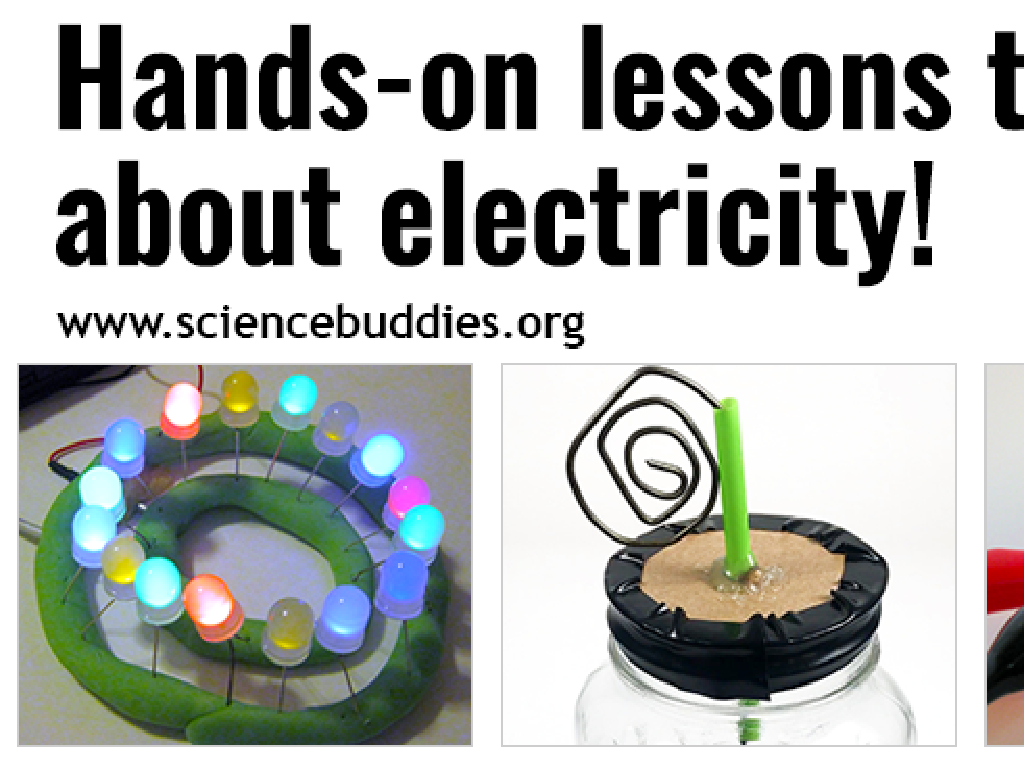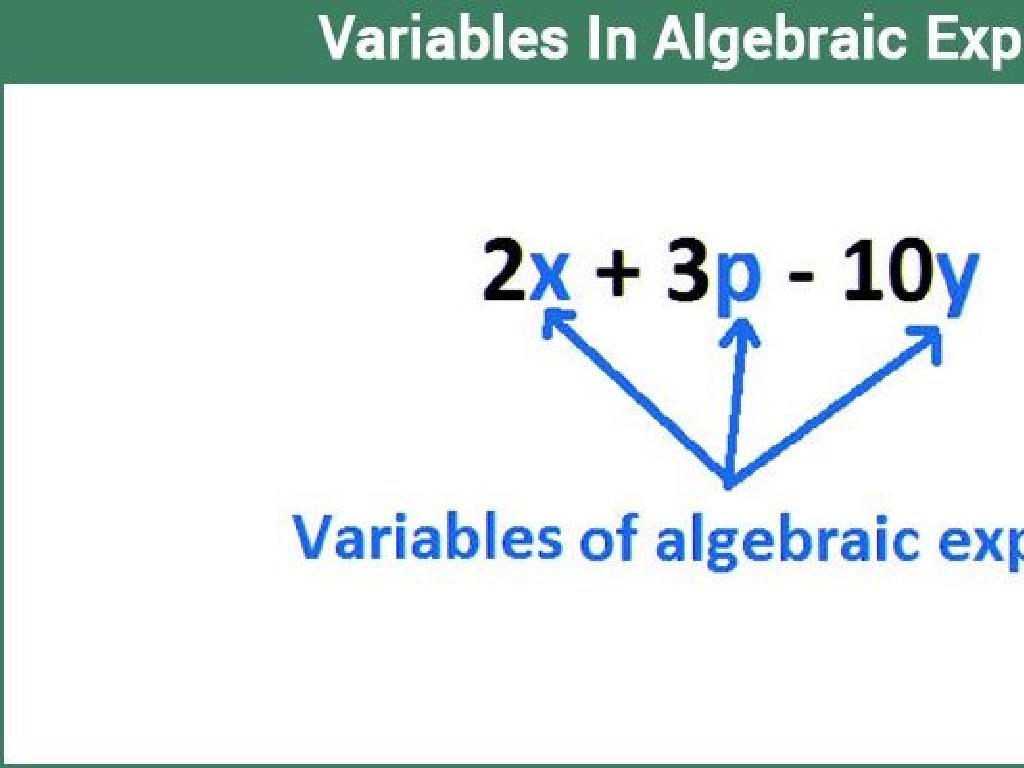Complete The Short E Word
Subject: Language arts
Grade: Kindergarten
Topic: Short E
Please LOG IN to download the presentation. Access is available to registered users only.
View More Content
Welcome to Short ‘e’ Sounds!
– Learn about the short ‘e’ sound
– Practice saying ‘eh’ like in ‘bed’
– It sounds like ‘eh’ as in ‘red’, ‘bed’, ‘pet’
– Spot the short ‘e’ in words
– Find words with the ‘eh’ sound in your favorite books
– Become short ‘e’ experts
|
This slide introduces the short ‘e’ sound to Kindergarten students, which is a fundamental part of phonemic awareness and reading skills. Start by explaining the sound and providing clear examples, such as ‘bed’, ‘red’, and ‘pet’. Engage the students by asking them to repeat the sound after you. Then, move on to a group activity where students identify words with the short ‘e’ sound from a list or their favorite books. Encourage them to listen for the ‘eh’ sound in words and praise their efforts as they become more familiar with this vowel sound. The goal is to build their confidence in recognizing and using the short ‘e’ sound in their reading and speaking.
Learning the Short ‘e’ Sound
– What is the short ‘e’ sound?
– It’s the sound ‘e’ makes in some words.
– ‘e’ as in ‘net’ and ‘pet’
– Like ‘bed’, ‘red’, and ‘leg’.
– It’s quick and soft
– Not like ‘bee’ where ‘e’ says its name.
– Practice saying the short ‘e’
|
This slide introduces the concept of the short ‘e’ sound to Kindergarten students. Start by explaining that letters can make different sounds and that the short ‘e’ sound is one of the sounds that the letter ‘e’ can make. Use familiar words such as ‘net’ and ‘pet’ to illustrate the sound. It’s important to emphasize the quickness and softness of the sound, distinguishing it from the long ‘e’ sound, where the letter ‘e’ says its name, like in ‘bee’. Engage the class by having them repeat the sound after you, and practice with different words that contain the short ‘e’ sound. This will help them recognize and pronounce the sound correctly in their reading and speaking.
Identifying Short ‘e’ Words
– Short ‘e’ sound is common
– Look at pictures for clues
– Pictures help us link words to sounds
– Listen to words: ‘bed’, ‘red’, ‘ten’
– ‘bed’ like where you sleep, ‘red’ like an apple, ‘ten’ like counting numbers
– Can you hear the short ‘e’ sound?
|
This slide is aimed at helping Kindergarten students recognize and pronounce the short ‘e’ sound in words. Start by explaining that the short ‘e’ sound is a common vowel sound in English. Show pictures that represent the words ‘bed’, ‘red’, and ‘ten’ to provide visual clues. As you say each word, emphasize the short ‘e’ sound and encourage the students to repeat after you. Ask the students if they can identify the short ‘e’ sound in each word to engage them in active listening. The goal is for students to associate the sound with the letter and to be able to recognize it in other words they encounter.
Practice Time: Short ‘e’ Sound
– Fill in blanks with short ‘e’
– Example: b_d = bed
– The word ‘bed’ has a short ‘e’ sound.
– Your turn with r_d, p_t, l_g
– Try to make new words with short ‘e’
– Can you find the short ‘e’?
– Think of the sound in ‘bed’ and ‘red’
|
This slide is an interactive activity for students to practice the short ‘e’ sound in words. Start by explaining that the short ‘e’ sound is the vowel sound in ‘bed’. Show them the example provided, and then encourage the students to apply this knowledge to complete the words ‘r_d’, ‘p_t’, and ‘l_g’. The goal is for them to recognize the pattern and sound, and fill in with ‘red’, ‘pet’, and ‘leg’. Make sure to go around the class and help students who may struggle with identifying the sound. Praise successful attempts and correct gently where needed. This exercise will reinforce their phonemic awareness and decoding skills.
Let’s Play: Match Short ‘e’ Words!
– Match pictures to short ‘e’ words
– Connect images with words like ‘bed’, ‘net’, ‘red’
– Say the words aloud during matching
– Practice pronunciation of ‘e’ sound in words
– Find all the matches quickly
– A fun race to reinforce learning
– Who will be the matching champion?
|
This slide introduces a matching game to help Kindergarten students recognize and pronounce short ‘e’ words. Provide a variety of pictures and corresponding words for students to match, such as ‘bed’, ‘net’, ‘red’, ‘pet’, and ‘wet’. Encourage them to say each word out loud as they make a match to practice their phonetic skills. Make it a friendly competition to see who can complete all the matches first, fostering a fun and engaging learning environment. This activity will help students with word recognition, pronunciation, and memory. Be prepared to assist students who may struggle and offer praise to all for their efforts.
Story Time with Short ‘e’
– Listen to a story with short ‘e’ words
– Words like ‘bed’, ‘pet’, and ‘net’
– Raise your hand for short ‘e’ sounds
– Practice listening for the ‘eh’ sound
– Count all the short ‘e’ words together
– We’ll tally the words as a class activity
|
This slide introduces an interactive story-listening activity designed for Kindergarten students to identify and practice the short ‘e’ sound. The teacher will read a story aloud, emphasizing words with the short ‘e’ sound, such as ‘bed’, ‘pet’, and ‘net’. Students will be encouraged to actively listen and raise their hand each time they hear a word with the short ‘e’ sound. This will help them to recognize the sound and associate it with the corresponding letter and word. As a class, everyone will count the number of times short ‘e’ words appear in the story. This activity not only reinforces phonemic awareness but also engages students in a fun and collaborative learning experience.
Class Activity: Short ‘e’ Word Hunt
– Let’s hunt for short ‘e’ words
– Find objects with the ‘e’ sound
– Look for items like ‘pen’, ‘net’, or ‘bed’
– Work in teams to list words
– See how many we can discover
|
This activity is designed to help Kindergarten students recognize and practice the short ‘e’ sound in a fun and interactive way. Set up the classroom with various objects that have the short ‘e’ sound in their names. Divide the class into small groups and provide each group with a paper to list their findings. Encourage them to look around the classroom and work together to find as many objects as they can that contain the short ‘e’ sound. Possible objects include ‘pen’, ‘net’, ‘bed’, ‘red’, ‘ten’, etc. After the hunt, regroup and have each team share their list with the class. This will reinforce their phonemic awareness of the short ‘e’ sound and enhance their vocabulary. Provide guidance and support as needed during the activity.
Great Work on Short ‘e’ Sounds!
– Celebrate learning short ‘e’
– Short ‘e’ sounds like ‘eh’
– It’s the sound in ‘bed’, ‘red’, and ‘net’
– Practice with family at home
– Look for words in books or around the house
– Find short ‘e’ words together
– Make a game of who can spot more words
|
This slide is a conclusion and review of the lesson on the short ‘e’ sound. Reinforce the pronunciation of the short ‘e’ sound, which is similar to the ‘eh’ in ‘bed’. Encourage the students to practice identifying short ‘e’ words at home with their families to reinforce their learning. Suggest that they look for these words in their favorite books or even during a scavenger hunt around the house. This activity will help solidify their understanding and make learning fun. Remember to praise their efforts and progress in learning about short ‘e’ sounds.






